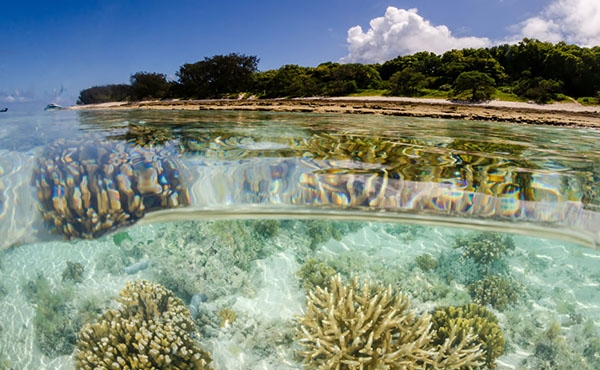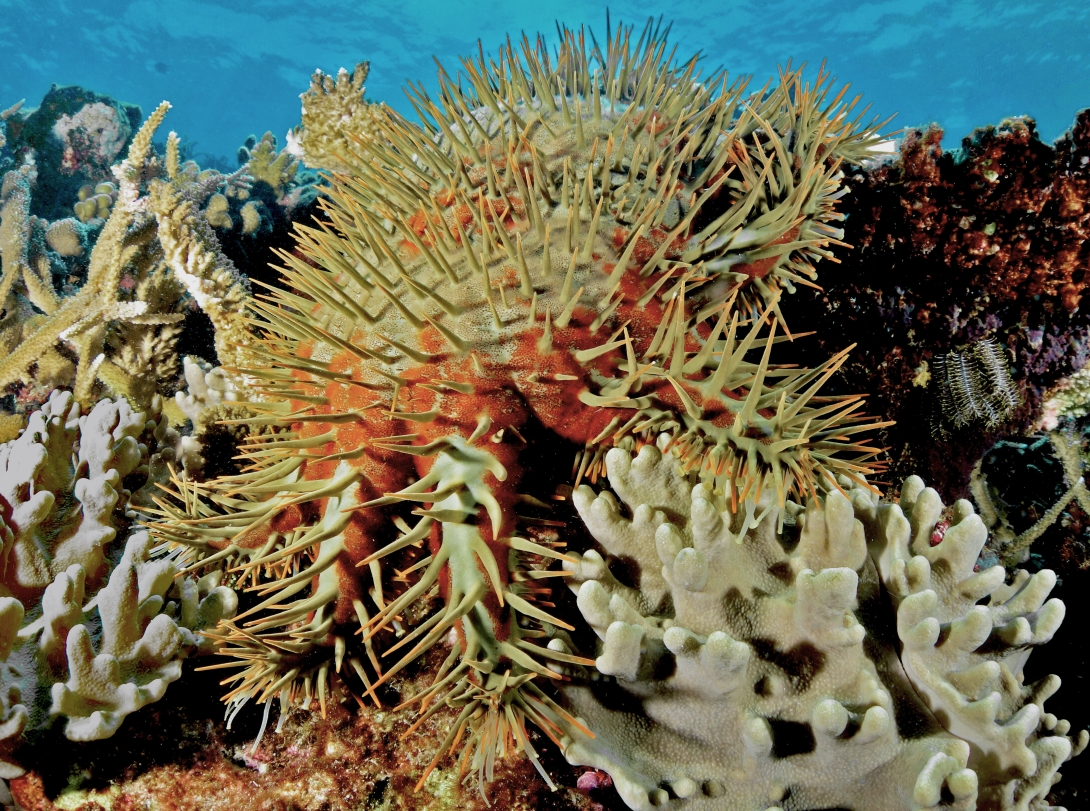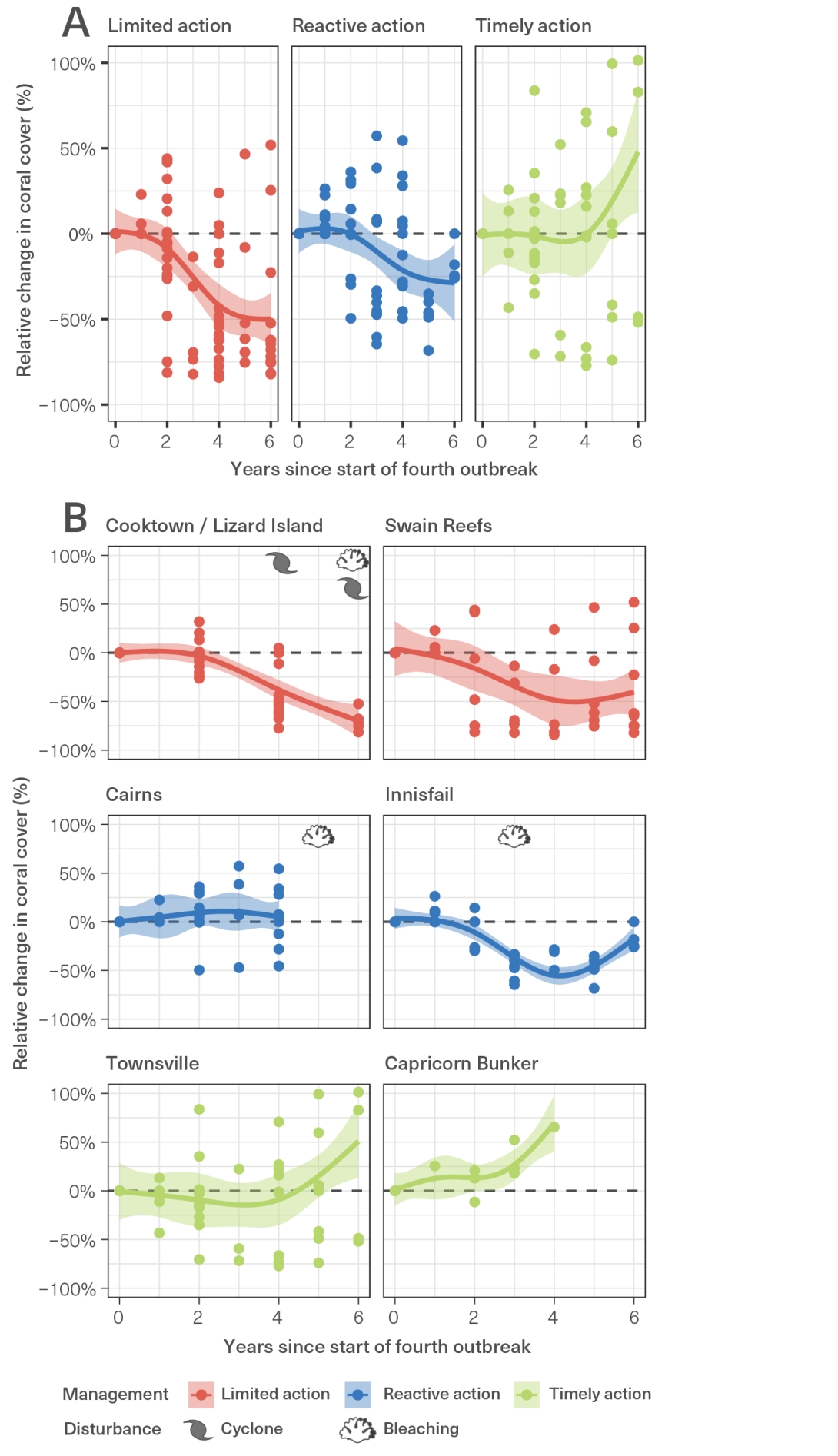183.
Chandler, J.F., Burn, D., Caballes, C.F., Doll, P.C., Kwong, S.L.T., et al. 2023, Increasing densities of Pacific crown-of-thorns starfish (Acanthaster cf. solaris) at Lizard Island, northern Great Barrier Reef, resolved using a novel survey method, Scientific Reports 13(1): 19306.
184.
Pratchett, M.S., Caballes, C.F., Burn, D., Doll, P.C., Chandler, J.F., et al. 2022, Scooter assisted large area diver-based (SALAD) visual surveys to test for renewed outbreaks of crown-of-thorns starfish (Acanthaster cf. solaris) in the northern Great Barrier Reef, A report to the Australian Government by the COTS Control Innovation Program.
187.
Matthews, S.A., Williamson, D.H., Beeden, R., Emslie, M.J., Abom, R.T.M., et al. 2024, Protecting Great Barrier Reef resilience through effective management of crown-of-thorns starfish outbreaks, PLoS One 19(4): e0298073.
735.
Caballes, C.F., Sambrook, K. and Pratchett, M.S. 2024, 2022 Scientific Consensus Statement: Summary | Evidence Statement for Question 4.3: What are the key drivers of the population outbreaks of Crown of Thorns Starfish (COTS) on the GBR, and what is the evidence for the contribution of nutrients from land-runoff to these outbreaks? in 2022 Scientific Consensus Statement on land-based impacts on Great Barrier Reef water quality and ecosystem condition, eds J. Waterhouse, M. Pineda and K. Sambrook, Commonwealth of Australia and Queensland Government.
809.
Deaker, D.J., Mos, B., Lin, H., Lawson, C., Budden, C., et al. 2020, Diet flexibility and growth of the early herbivorous juvenile crown-of-thorns sea star, implications for its boom-bust population dynamics, PloS One 15(7): e0236142.
877.
Caballes, C.F., Byrne, M., Messmer, V. and Pratchett, M.S. 2021, Temporal variability in gametogenesis and spawning patterns of crown-of-thorns starfish within the outbreak initiation zone in the northern Great Barrier Reef, Marine Biology 168(1): 13.
900.
Bellwood, D.R., Brandl, S.J., McWilliam, M., Streit, R.P., Yan, H.F., et al. 2024, Studying functions on coral reefs: past perspectives, current conundrums, and future potential, Coral Reefs: 1-17.
1005.
Pandolfi, J.M. 1992, A palaeobiological examination of the geological evidence for recurring outbreaks of the crown-of-thorns starfish, Acanthaster planci (L.), Coral Reefs 11: 87-93.
1006.
Frankel, E. 1978, Evidence from the Great Barrier Reef of ancient Acanthaster aggregations, Atoll Research Bulletin.
1007.
Wooldridge, S.A. and Brodie, J.E. 2015, Environmental triggers for primary outbreaks of crown-of-thorns starfish on the Great Barrier Reef, Australia, Marine Pollution Bulletin 101(2): 805-815.
1008.
Brodie, J., Fabricius, K., De’ath, G. and Okaji, K. 2005, Are increased nutrient inputs responsible for more outbreaks of crown-of-thorns starfish? An appraisal of the evidence, Marine Pollution Bulletin 51(1-4): 266-278.
1009.
Zann, L., Brodie, J., Berryman, C. and Naqasima, M. 1987, Recruitment, ecology, growth and behavior of juvenile Acanthaster planci (L.) (Echinodermata: Asteroidea), Bulletin of Marine Science 41: 561-575.
1010.
Pratchett, M.S., Caballes, C.F., Wilmes, J.C., Matthews, S., Mellin, C., et al. 2017, Thirty years of research on crown-of-thorns starfish (1986–2016): scientific advances and emerging opportunities, Diversity 9(4): 41.
1011.
Deaker, D.J. and Byrne, M. 2022, Crown of thorns starfish life-history traits contribute to outbreaks, a continuing concern for coral reefs, Emerging Topics in Life Sciences 6(1): 67-79.
1012.
Sweatman, H. 2008, No-take reserves protect coral reefs from predatory starfish, Current Biology 18(14): R598-R599.
1013.
Prachett, M.S., Caballes, C.F., Rivera-Pasada, J.A. and Sweatman, H.P.A. 2014, Limits to understanding and managing outbreaks of crown-of-thorns starfish (Acanthaster spp.), in Oceanography and Marine Biology: An annual review, eds R.N. Hughes, D.J. Hughes and I.P Smith, CRC Press, Boca Raton, pp. 133-200.
1014.
Westcott, D.A., Fletcher, C.S., Kroon, F.J., Babcock, R.C., Plagányi, E.E., et al. 2020, Relative efficacy of three approaches to mitigate Crown-of-Thorns Starfish outbreaks on Australia’s Great Barrier Reef, Scientific Reports 10(1): 12594.
1015.
Castro‐Sanguino, C., Bozec, Y., Condie, S.A., Fletcher, C.S., Hock, K., et al. 2023, Control efforts of crown‐of‐thorns starfish outbreaks to limit future coral decline across the Great Barrier Reef, Ecosphere 14(6): e4580.
1016.
Neil, R.C., Gomez Cabrera, M. and Uthicke, S. 2022, Juvenile age and available coral species modulate transition probability from herbivory to corallivory in Acanthaster cf. solaris (Crown-of-Thorns Seastar), Coral Reefs 41(4): 843-848.
1017.
Deaker, D.J., Agüera, A., Lin, H., Lawson, C., Budden, C., et al. 2020, The hidden army: corallivorous crown-of-thorns seastars can spend years as herbivorous juveniles, Biology letters 16: 20190849.
1018.
Byrne, M., Deaker, D.J., Gibbs, M., Selvakumaraswamy, P. and Clements, M. 2023, Juvenile waiting stage crown-of-thorns sea stars are resilient in heatwave conditions that bleach and kill corals, Global Change Biology 29(23): 6493-6502.
1019.
Miller, I., Sweatman, H., Cheal, A., Emslie, M., Johns, K., et al. 2015, Origins and implications of a primary crown-of-thorns starfish outbreak in the southern Great Barrier Reef, Journal of Marine Sciences 2015: 809624.
1020.
Matthews, S.A., Mellin, C. and Pratchett, M.S. 2020, Larval connectivity and water quality explain spatial distribution of crown-of-thorns starfish outbreaks across the Great Barrier Reef, in Advances in Marine Biology, Elsevier, pp. 223-258.
1021.
Brodie, J., Devlin, M. and Lewis, S. 2017, Potential enhanced survivorship of crown of thorns starfish larvae due to near-annual nutrient enrichment during secondary outbreaks on the central mid-shelf of the Great Barrier Reef, Australia, Diversity 9(1): 17.
1022.
Uthicke, S., Robson, B., Doyle, J.R., Logan, M., Pratchett, M.S., et al. 2022, Developing an effective marine eDNA monitoring: eDNA detection at pre-outbreak densities of corallivorous seastar (Acanthaster cf. solaris), Science of the Total Environment 851: 158143.
1023.
Great Barrier Reef Marine Park Authority, Australian Institute of Marine Science and CSIRO 2023, Reef snapshot: summer 2022-23, Reef Authority, Townville.
1024.
Westcott, D.A., Fletcher, C.S., Gladish, D.W., MacDonald, S. and Condie, S. 2021, Integrated pest management crown-of-thorns starfish control program on the Great Barrier Reef: current performance and future potential. Report to the National Environmental Science Program, Reef and Rainforest Research Centre Limited, Cairns.




